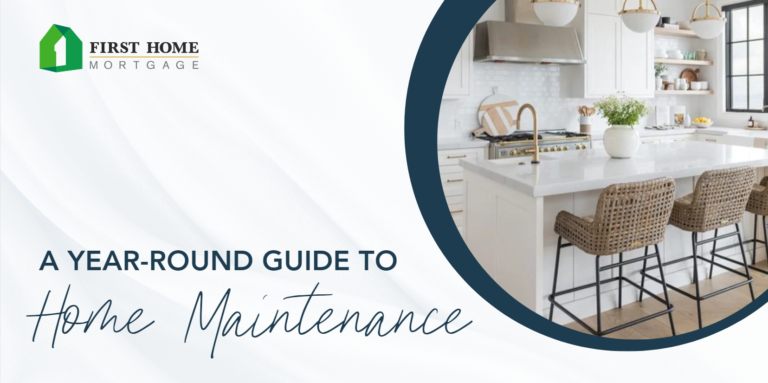
Welcoming a new bundle of joy into your family is an exciting milestone, but as they get older and more mobile and curious, it’s important that you make sure your home is safe. Babyproofing, or kid-proofing, your house is a great way of minimizing risk and ensuring your little one stays healthy and safe. Here are some helpful tips for how to best babyproof your home.
Secure Furniture and Décor
Your child may be small, but in many cases, it doesn’t take much to tip over a large piece of furniture which can severely injure them. Heavy and large pieces such as dressers, bookshelves, TV stands, and TVs are particularly at risk of toppling over. To avoid this, anchor this kind of furniture to the wall. Make sure heavy picture frames and other décor are properly hung so you don’t risk having them fall. Avoid placing items on tables using tablecloths and runners as your child may be able to pull on them and knock things off. Putting corner guards on furniture can also protect your child from hurting themselves if they bump into something.
Protect Against Water and Electricity
Water and electricity pose a drowning, burn, and shock risk. Cover all electrical outlets and avoid leaving cords within your baby’s reach. To minimize the chance of your child pulling on cords, try keeping furniture in front of plugs so they’re less accessible. Avoid using power strips unless they’re kept up high and out of your little one’s reach. When it comes to water, restrict your child’s access in order to minimize drowning risk. Keep toilet lids shut and consider buying a lid lock to ensure they can’t open it. Never leave water in the bathtub after bath time. While sinks are generally too high up to be accessed by your baby, you can use handle locks so your child can’t turn on the water by themselves. Make sure your water heater is set to no higher than 120 degrees to prevent scalding and burns. It’s also important to keep electrical items away from water so there’s no electrocution risk.
Beware of Choking Hazards
Putting things in their mouth is one of the ways young children start to explore the world. If your little one gets their hands on something small, they can, and often will, try putting it in their mouth which presents a serious risk of choking. Toys with small parts, jewelry, batteries, nails, and bolts, magnets, push pins, paperclips, and coins are just a few of the everyday items that can pose a choking risk. Make sure these are out of your child’s reach and check between cushions, under rugs, and on low surfaces to double-check that nothing hazardous is still accessible. Medications, chemicals, alcohol, soaps, and detergents, and paint not only pose a choking risk, but a risk of poisoning as well, so be sure they’re secured by keeping them up high when possible and always locked away.
Restrict Where They Can Go
Even when you try your hardest, your busy life can make it difficult to keep eye on your little one at all times. When set up correctly, baby gates are a great way to make sure they stay safe and are only able to access certain rooms. Keep doors that lead outside locked (using top locks and bolts when available) and use doorknob covers to stop them from opening doors they shouldn’t.
Don’t Forget About the Outdoors
When it’s done right, babyproofing should make it all but impossible for your child to make it outside on their own. However, you should still do what you can to make your yard and surrounding areas safer should they somehow end up outdoors. Make sure landscaping equipment is put away and secured. If you have a pool, it’s essential that it be fenced in and have a locked gate. There are even pool alarms you can get that will sound when someone enters the water should your child manage to make their way to the pool.
Go Room by Room
Check out every room of your house to ensure all potential hazards have been taken care of. Getting down on your hands and knees can help you view space from your child’s perspective and may uncover risks you wouldn’t have noticed otherwise. From there, you can create a list of things to do and buy to make each room safe. There are many online guides that detail safety tips by room, like this one from SafeWise.
Make Sure Your House is Safe for Everyone
Beyond the typical child-proofing measures you can take, you should ensure your home is safe for everyone in it. Make sure smoke and carbon monoxide detectors have fresh batteries and are functioning properly. Have your home utilities and systems periodically tested and serviced to ensure they’re in working order. Keep a fire extinguisher in your kitchen or near the fireplace. Consider adding a home security system. The more you do to ensure your home is safe, the happier and healthier your whole family will be, including your child.
Are you puppy proofing instead? Check out our blog on how to pet-proof your home here.


